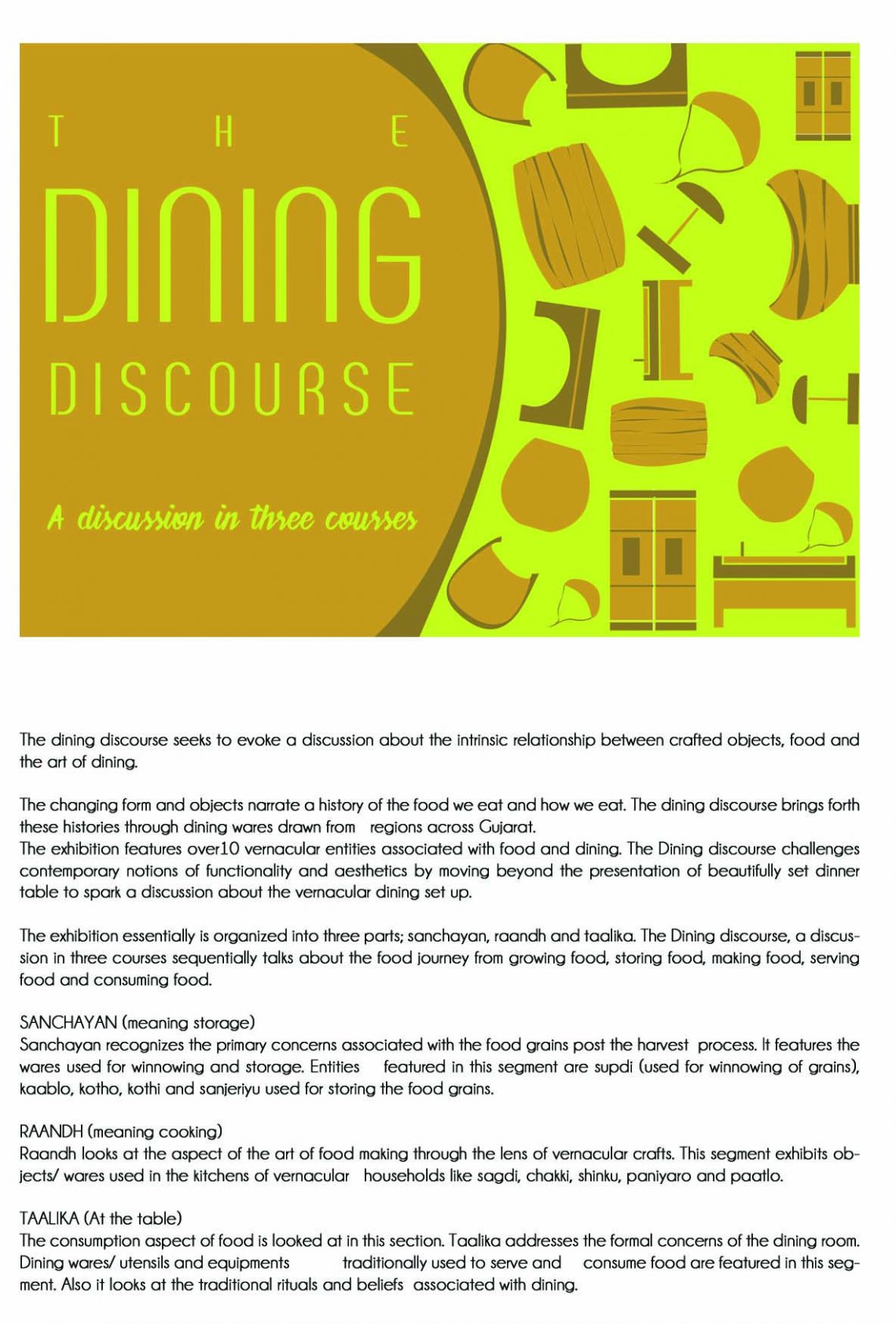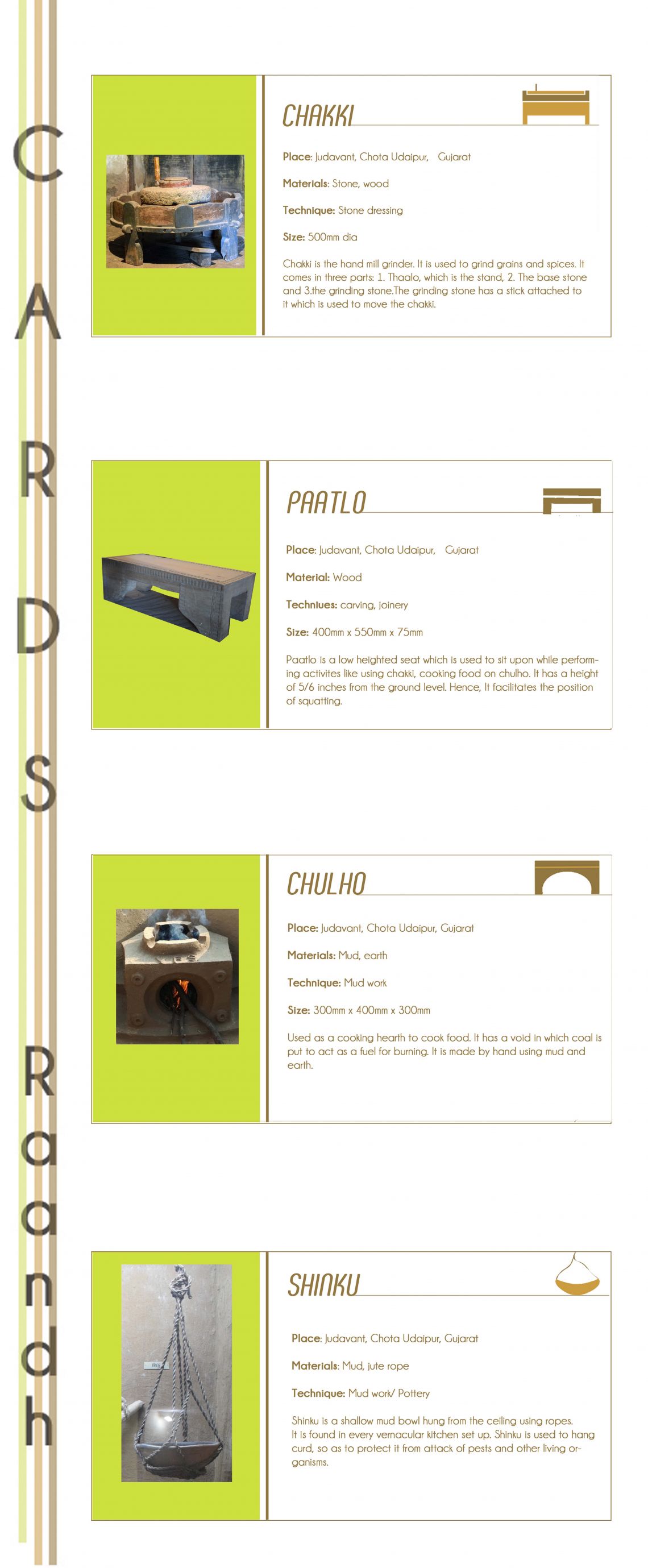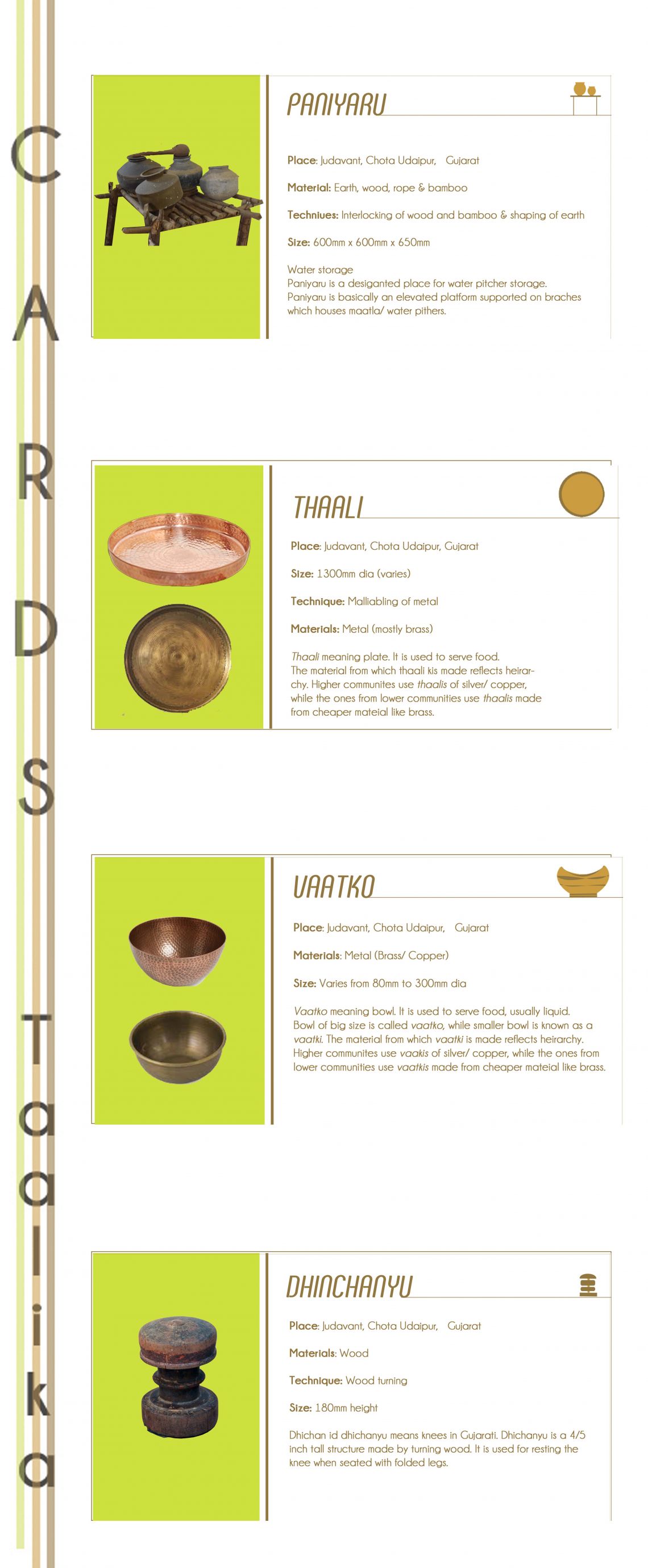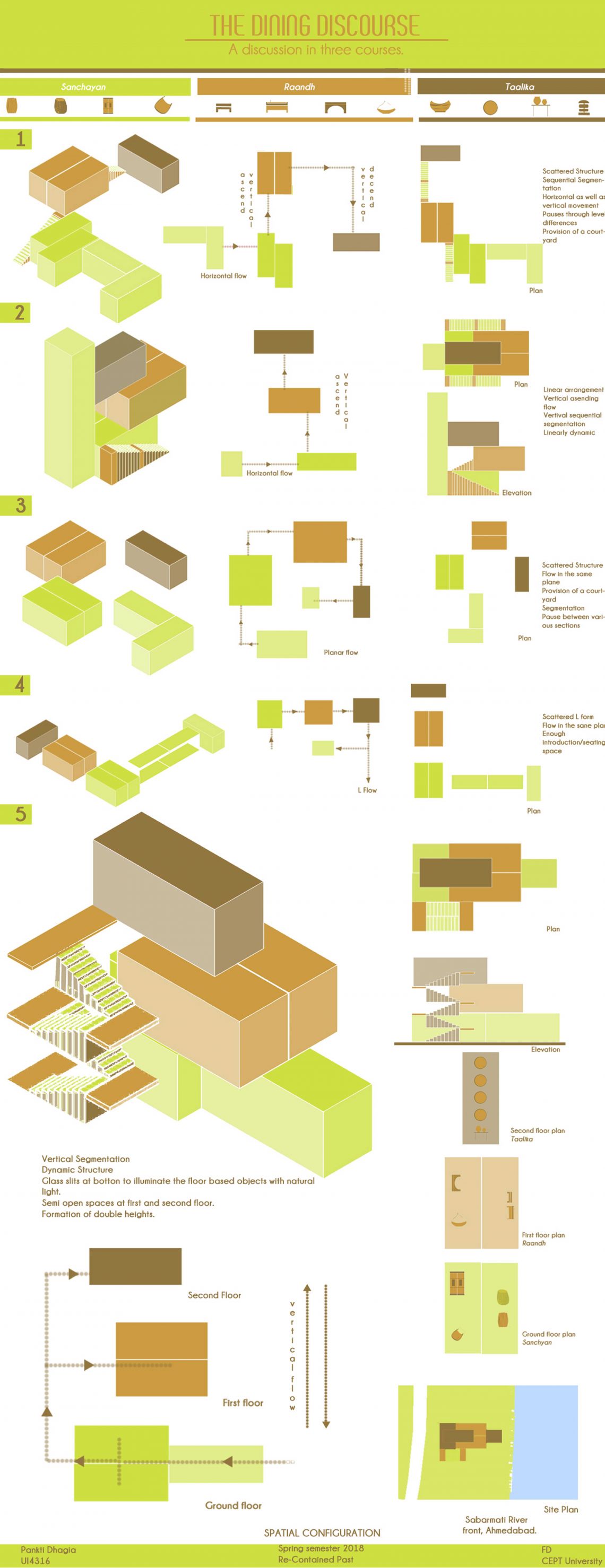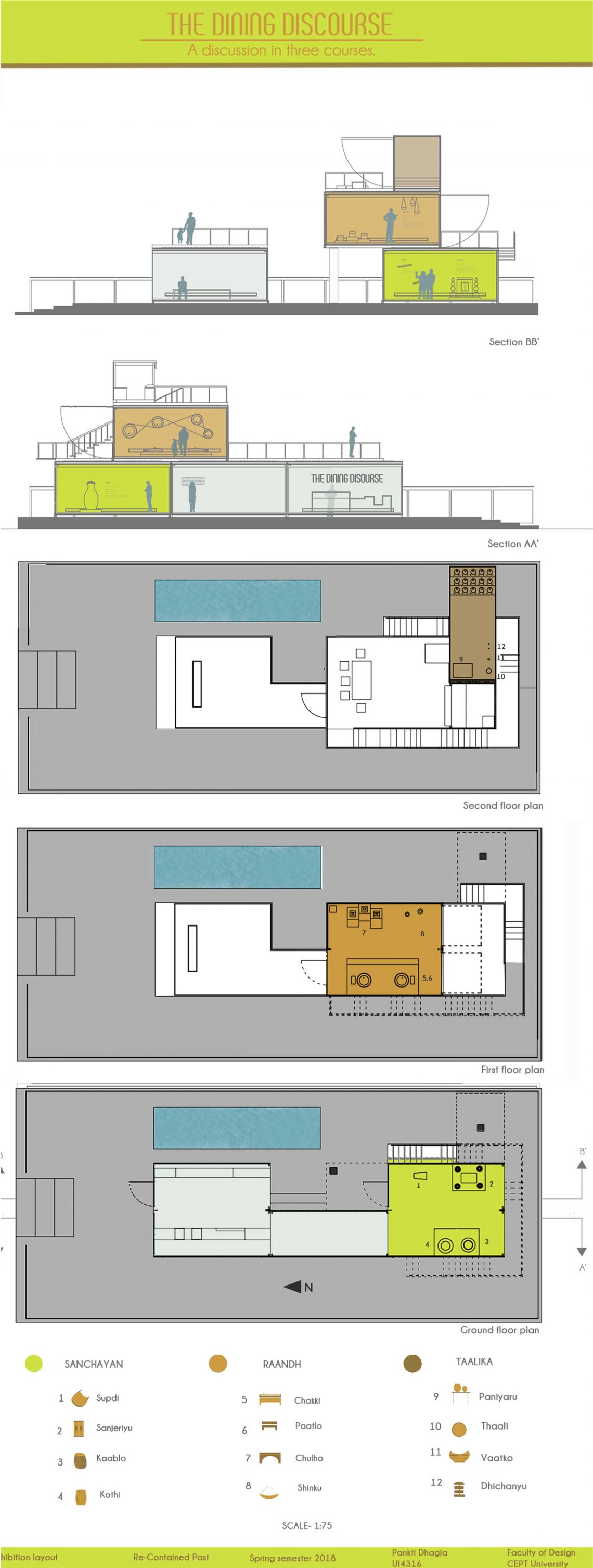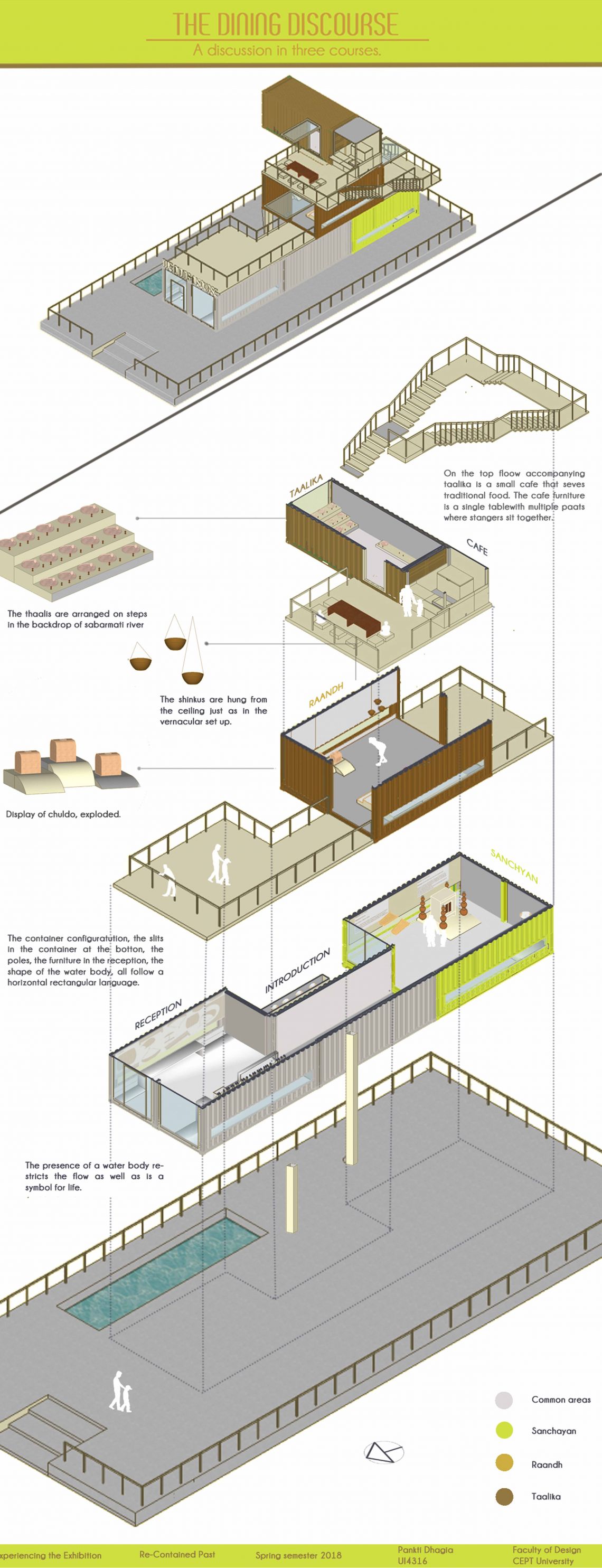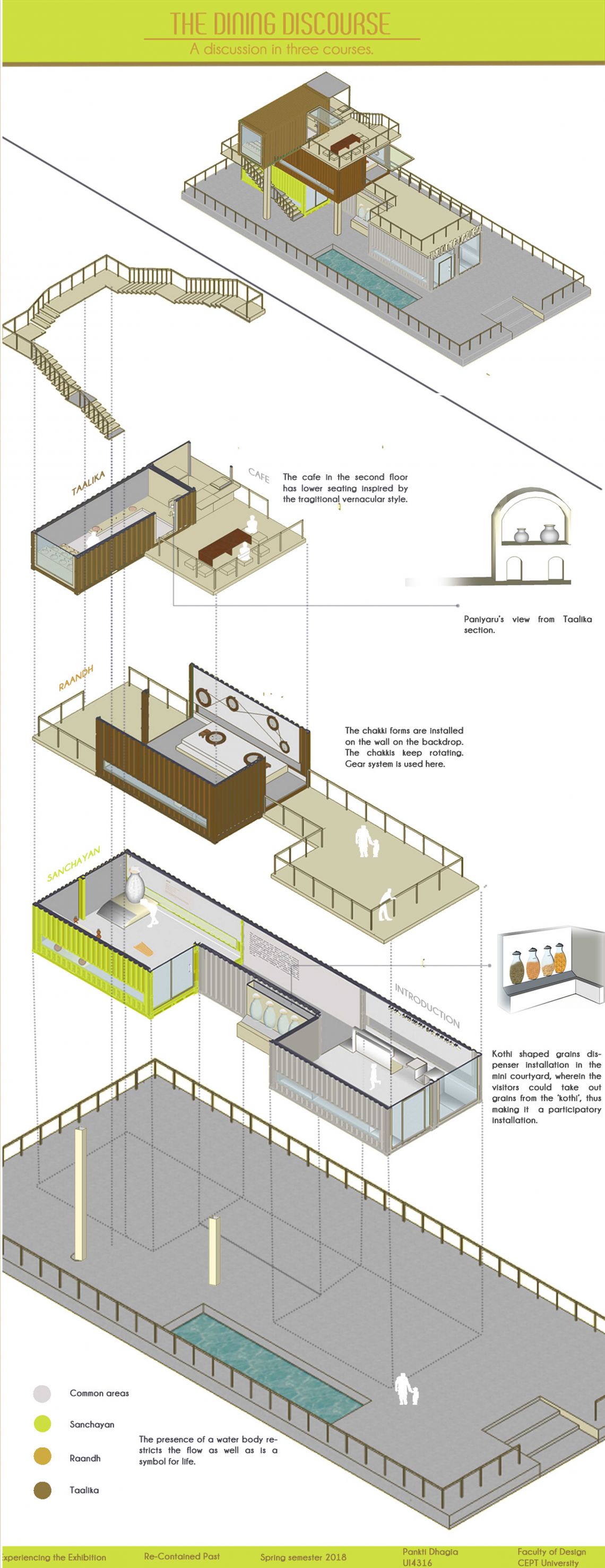Your browser is out-of-date!
For a richer surfing experience on our website, please update your browser. Update my browser now!
For a richer surfing experience on our website, please update your browser. Update my browser now!
The dining discourse seeks to evoke a discussion about the intrinsic relationship between crafted objects, food and the art of dining. The changing form and objects narrate a history of the food we eat and how we eat. The dining discourse brings forth these histories through dining wares drawn from regions across Gujarat. The exhibition features over10 vernacular entities associated with food and dining. The Dining discourse challenges contemporary notions of functionality and aesthetics by moving beyond the presentation of beautifully set dinner table to spark a discussion about the vernacular dining set up. The exhibition essentially is organized into three parts; sanchayan, raandh and taalika. The Dining discourse, a discussion in three courses sequentially talks about the food journey from growing food, storing food, making food, serving food and consuming food. SANCHAYAN (meaning storage) Sanchayan recognizes the primary concerns associated with the food grains post the harvest process. It features the wares used for winnowing and storage. Entities featured in this segment are supdi (used for winnowing of grains), kaablo, kotho, kothi and sanjeriyu used for storing the food grains. RAANDH (meaning cooking) Raandh looks at the aspect of the art of food making through the lens of vernacular crafts. This segment exhibits objects/ wares used in the kitchens of vernacular households like sagdi, chakki, shinku, paniyaro and paatlo. TAALIKA (At the table) The consumption aspect of food is looked at in this section. Taalika addresses the formal concerns of the dining room. Dining wares/ utensils and equipments traditionally used to serve and consume food are featured in this segment. Also it looks at the traditional rituals and beliefs associated with dining.
